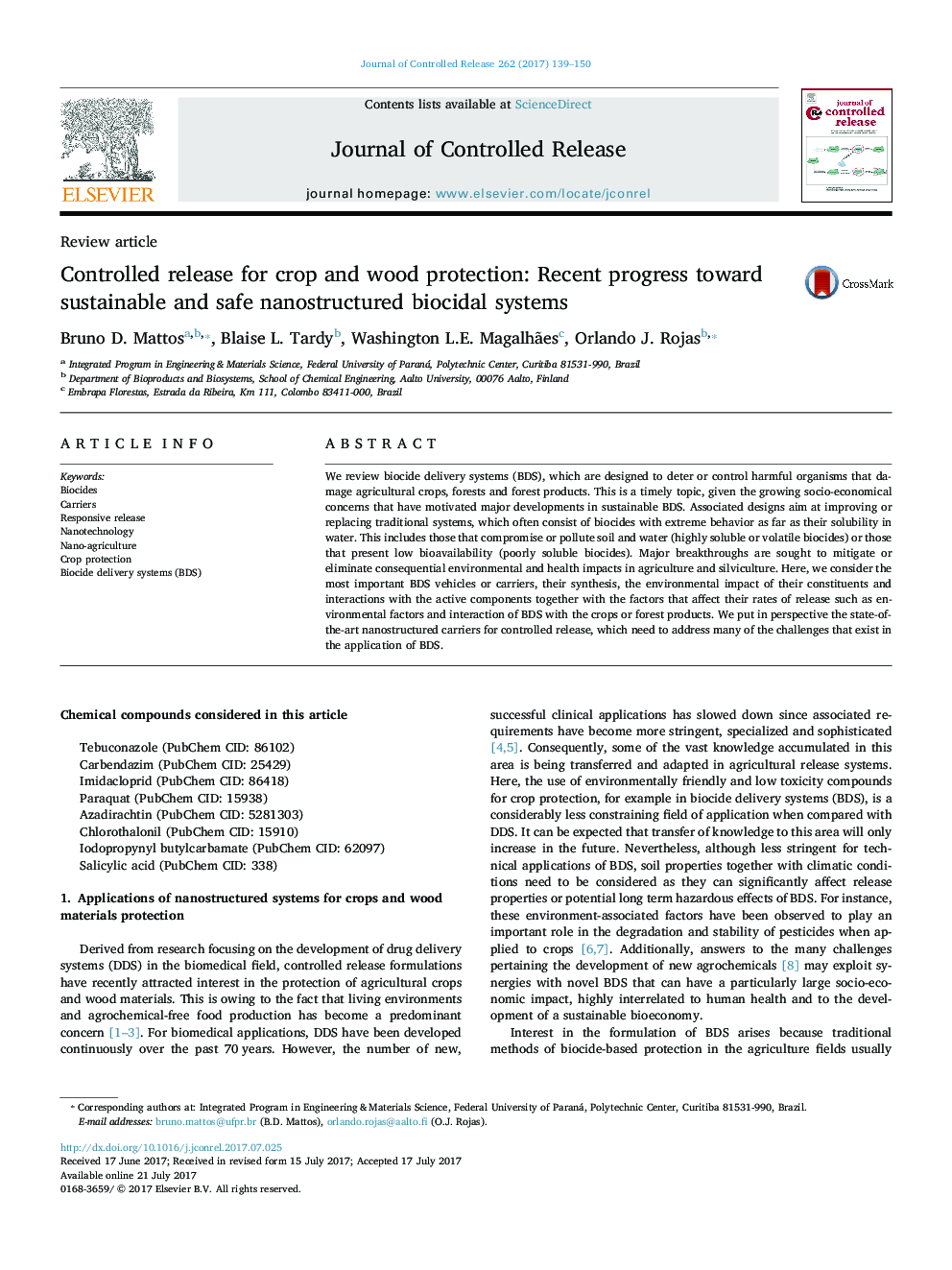| Article ID | Journal | Published Year | Pages | File Type |
|---|---|---|---|---|
| 5433454 | Journal of Controlled Release | 2017 | 12 Pages |
We review biocide delivery systems (BDS), which are designed to deter or control harmful organisms that damage agricultural crops, forests and forest products. This is a timely topic, given the growing socio-economical concerns that have motivated major developments in sustainable BDS. Associated designs aim at improving or replacing traditional systems, which often consist of biocides with extreme behavior as far as their solubility in water. This includes those that compromise or pollute soil and water (highly soluble or volatile biocides) or those that present low bioavailability (poorly soluble biocides). Major breakthroughs are sought to mitigate or eliminate consequential environmental and health impacts in agriculture and silviculture. Here, we consider the most important BDS vehicles or carriers, their synthesis, the environmental impact of their constituents and interactions with the active components together with the factors that affect their rates of release such as environmental factors and interaction of BDS with the crops or forest products. We put in perspective the state-of-the-art nanostructured carriers for controlled release, which need to address many of the challenges that exist in the application of BDS.
Graphical abstractDownload high-res image (332KB)Download full-size image
